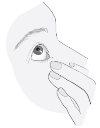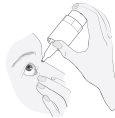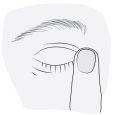
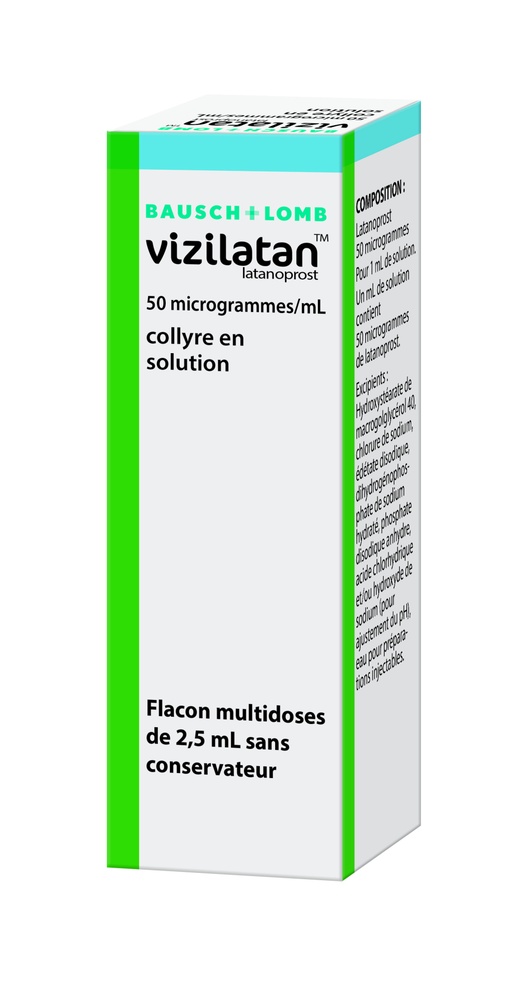
VIZILATAN 50 micrograms/ml eye drops in solution

Ask a doctor about a prescription for VIZILATAN 50 micrograms/ml eye drops in solution

How to use VIZILATAN 50 micrograms/ml eye drops in solution
Introduction
Vizilatan 50micrograms/ml eye drops solution
latanoprost
Read the entire package leaflet carefully before you start using this medicine, as it contains important information for you.
- Keep this package leaflet, as you may need to read it again.
- If you have any further questions, ask your doctor, the doctor treating your child, or your pharmacist.
- This medicine has been prescribed to you or your child, and you should not pass it on to others, as it may harm them, even if their symptoms are the same as yours.
- If you or your child experience any side effects, talk to your doctor, the doctor treating your child, or your pharmacist, even if they are not listed in this package leaflet. See section 4.
Contents of the package leaflet
- What Vizilatan is and what it is used for
- What you need to know before you start using Vizilatan
- How to use Vizilatan
- Possible side effects
- Storing Vizilatan
- Package contents and further information
1. What Vizilatan is and what it is used for
Vizilatan belongs to a group of medicines known as prostaglandin analogues. It works by increasing the natural outflow of fluid from the inside of the eye into the bloodstream.
This medicine is used to treat open-angle glaucomaand ocular hypertensionin adults. These two conditions can occur together, resulting in increased intraocular pressure that can affect vision.
This medicine is also used to treat increased eye pressure and glaucoma in babies and children of all ages.
Vizilatan can be used in adult men and women (including elderly patients) and in children from birth to 18 years of age. Vizilatan has not been evaluated in premature babies (born before 36 weeks of gestation).
Vizilatan eye drops solution is a sterile solution that does not contain preservatives.
2. What you need to know before you start using Vizilatan
Do not useVizilatanif:
- You are allergic to latanoprost or any of the other ingredients of this medicine (listed in section 6).
Warnings and precautions
If you think any of the following apply to you or your child, talk to your doctor, the doctor treating your child, or your pharmacist before using Vizilatan or giving it to your child:
- If you or your child are going to have or have had eye surgery (including cataract surgery).
- If you or your child have eye problems (such as eye pain, irritation, or inflammation, blurred vision).
- If you or your child have dry eye.
- If you or your child have severe asthma or uncontrolled asthma.
- If you or your child wear contact lenses. You can continue to use Vizilatan, but you must follow the instructions for contact lens wearers in section 3.
- If you or your child have had a viral eye infection caused by the herpes simplex virus (HSV).
Other medicines and Vizilatan
This medicine may interact with other medicines. Tell your doctor, the doctor treating your child, or your pharmacist if you or your child are using or have recently used or might use other medicines (or eye drops), including those obtained without a prescription. In particular, talk to your doctor or pharmacist if you know you are using prostaglandins, prostaglandin analogues, or prostaglandin derivatives.
Pregnancy and breastfeeding
Pregnancy
Do not use this medicine if you are pregnant or breastfeeding, unless your doctor considers it necessary. If you are pregnant or breastfeeding, think you may be pregnant, or are planning to have a baby, ask your doctor for advice before using this medicine.
Driving and using machines
You may experience blurred vision for a short time when using this medicine. If this happens, do not drive or use tools or machines until your vision is clear again.
Vizilatan containsmacrogolglycerol hydroxystearate 40
This medicine contains macrogolglycerol hydroxystearate 40, which may cause skin reactions.
Vizilatan contains phosphate buffer
This medicine contains 0.19 mg of phosphates in each drop, which is equivalent to 6.79 mg/ml.
If you have severe corneal damage (the transparent layer on the front of the eye), treatment with phosphates, in very rare cases, can cause blurred vision due to calcium accumulation.
3. How to use Vizilatan
Follow the instructions for using this medicine exactly as your doctor or the doctor treating your child has told you. If you are unsure, talk to your doctor, the doctor treating your child, or your pharmacist.
The recommended dose for adults (including elderly patients) and children is one drop in the affected eye(s) once a day. It is best to administer it at night.
Do not use this medicine more than once a day; the effectiveness of the treatment may decrease if it is administered more frequently.
Use this medicine as your doctor or the doctor treating your child has told you, until they tell you to stop.
Contact lens wearers
If you or your child wear contact lenses, you must remove them before using this medicine. After applying this medicine, you must wait 15 minutes before putting your contact lenses back in.
Instructions for use
1a
1b |
|
|
|
3 |
|
4 |
|
5 |
|
|
If you useVizilatanwith other eye drops
Wait at least 5 minutes between using this medicine and administering other eye drops.
If you use moreVizilatanthan you should
If you put too many drops in your eye, you may feel a slight irritation in the eye, and your eye may become red and watery. This should go away, but if you are concerned, talk to your doctor or the doctor treating your child for advice.
If you swallow Vizilatan
In case of accidental ingestion of this medicine, talk to your doctor or call the Toxicology Information Service, phone: 91 562 04 20.
If you forget to useVizilatan
Continue with the next dose as usual. Do not use a double dose to make up for the forgotten dose. If you have any doubts, talk to your doctor or pharmacist.
If you stop usingVizilatan
If you want to stop using this medicine, you must talk to your doctor or the doctor treating your child.
If you have any other questions about using this medicine, ask your doctor or pharmacist.
4. Possible side effects
Like all medicines, this medicine can cause side effects, although not everybody gets them.
The following side effects are known to be associated with the use of this medicine:
Very common(affect more than 1 in 10 people):
- Gradual change in eye color due to an increase in the amount of brown pigment in the colored part of the eye, known as the iris. If you have mixed-color eyes (blue-brown, gray-brown, yellow-brown, or green-brown), you are more likely to experience this change than if your eyes are a single color (blue, gray, green, or brown). The change in eye color may take years to appear, although it can usually be seen after 8 months of treatment. The change in eye color may be permanent and may be more noticeable if you use this medicine in only one eye. The change in eye color does not seem to be associated with any problems. The change in eye color does not progress once treatment with this medicine is stopped.
- Redness of the eye.
- Ocular irritation (feeling of stinging, feeling of grit in the eye, itching, pain, and feeling of a foreign body in the eye). If you experience eye irritation severe enough to make your eyes water excessively, or if you consider stopping this treatment, contact your doctor, pharmacist, or nurse (within a week). Your treatment may need to be reviewed to ensure you continue to receive the most suitable treatment for your condition.
- Gradual change in the eyelashes of the treated eye and the fine hair around the treated eye, observed in most patients of Japanese origin. These changes involve an increase in color (darkening), length, thickness, and number of eyelashes.
Common(affect less than 1 in 10 people):
- Inflammation of the eyelid margins (blepharitis)
- Eye pain, sensitivity to light (photophobia).
- Conjunctivitis.
- Inflammation or irritation of the surface of the eye (punctate keratitis), usually asymptomatic.
Uncommon(affect less than 1 in 100 people):
- Swelling of the eyelids.
- Dry eye.
- Inflammation of the cornea (keratitis).
- Blurred vision.
- Inflammation of the colored part of the eye (uveitis).
- Swelling of the retina (macular edema), including swelling of the retina inside the eye that leads to worsening vision (cystoid macular edema).
- Skin rash.
- Chest pain (angina), awareness of heartbeat (palpitations).
- Asthma, difficulty breathing (dyspnea).
- Chest pain.
- Headache, dizziness
- Muscle pain, joint pain.
- Nausea
- Vomiting
Rare(affect less than 1 in 1,000 people):
- Inflammation of the iris (iritis).
- Symptoms of swelling (corneal edema) or rupture/damage (corneal erosion) on the surface of the eye.
- Swelling around the eye (periorbital edema).
- Misdirected or extra eyelashes.
- Scarring on the surface of the eye.
- Accumulation of fluid in the colored part of the eye (iris cyst).
- Skin reactions on the eyelids, darkening of the eyelid skin.
- Worsening of asthma.
- Severe itching of the skin.
- Development of viral eye infection caused by the herpes simplex virus (herpetic keratitis).
- Corneal edema
- Formation of fluid-filled blisters on the surface of the eye that can cause redness, irritation, and swelling of the eye and surrounding tissue (ocular pemphigoid or pseudo-pemphigoid of the ocular conjunctiva).
Very rare(affect less than 1 in 10,000 people):
- Worsening of angina in patients with heart problems.
- Appearance of sunken eyes (greater depth of the eyelid sulcus).
Frequency not known(cannot be estimated from the available data):
- Cough and sore throat or inflamed nose (nasopharyngitis)
- Upper respiratory tract infection.
- Redness of the eyelid (eyelid erythema)
- Irritation of the eyelid.
- Formation of crusts on the eyelid margin.
- Watery eyes (increased tearing).
The side effects observed in children at a higher frequency than in adults are runny nose and itching of the nose and fever.
In very rare cases, some patients with severe damage to the transparent layer on the front of the eye (cornea) have developed opaque spots on the cornea due to calcium deposits during treatment.
Reporting side effects
If you experience any side effects, talk to your doctor, pharmacist, or nurse, even if they are not listed in this package leaflet. You can also report side effects directly through the Spanish Pharmacovigilance System for Human Use Medicines: https://www.notificaram.es. By reporting side effects, you can help provide more information on the safety of this medicine.
5. Storing Vizilatan
Keep this medicine out of the sight and reach of children.
Do not use this medicine after the expiry date stated on the carton and bottle, after "EXP". The expiry date is the last day of the month shown.
Follow these storage instructions:
Unopened bottle: Store below 25°C.
After first opening the bottle: No special storage conditions are required.
To avoid infections, four weeks after opening the bottle for the first time, you must discard it. Write the opening date of the bottle on the label of the bottle and the carton.
Medicines should not be disposed of via wastewater or household waste. Place the packaging and any unused medicine in the SIGRE collection point at your pharmacy. If you have any doubts, ask your pharmacist how to dispose of the packaging and any unused medicine. This will help protect the environment.
6. Container Contents and Additional Information
Vizilatan Composition
- The active ingredient is latanoprost.
Each ml of solution contains 50 micrograms of latanoprost.
- The other components are: macrogolglycerol hydroxystearate 40, sodium chloride, disodium edetate, sodium dihydrogen phosphate dihydrate, anhydrous disodium phosphate, hydrochloric acid and/or sodium hydroxide (for pH adjustment), water for injectable preparations.
Appearance of Vizilatan and Container Contents
Vizilatan is presented as 2.5 mL of aqueous solution, transparent and colorless, which corresponds to approximately 80 drops of solution, without visible particles, in a cardboard box containing a 5 mL multidose white bottle (HDPE) with pump (PP, HDPE, LDPE) and orange cap and pressure cylinder (HDPE).
Package sizes:
The cardboard boxes contain 1, 3 or 4 bottles with 2.5 ml of solution
Only some package sizes may be marketed.
Marketing Authorization Holder and Manufacturer
Marketing Authorization Holder:
BAUSCH + LOMB IRELAND LIMITED
3013 Lake Drive
Citywest Business Campus
Dublin 24, D24PPT3
Ireland
Local Representative in Spain
Bausch & Lomb S.A.
Avda. Valdelaparra, nº 4
28108 Alcobendas
Madrid, Spain.
Tel: 91 – 657 63 00
Manufacturer:
Lomapharm GmbH
Langes Feld 5
31860 Emmerthal
Germany
or
Pharmathen S.A.
Dervenakion Str. 6
15351 Pallini
Attiki
Greece
This medicinal product is authorized in the Member States of the European Economic Area under the following names:
DK:Vizilatan
BG:??????? 0,05 mg/ml ????? ?? ???, ???????
CZ:Vizilatan
GR:Visiolatan
FR:Vizilatan 50 microgrammes/ml, collyre en solution
HR:Vizilatan 50 mikrograma/ml kapi za oko, otopina
HU:Vizilatan 0,05 mg/ml oldatos szemcsepp
NL:Vizilatan 50 microgram/ml oogdruppels, oplossing
PL:Vizilatan
SK:Vizilatan 0,05 mg/ml
AT:Vizilatan 0,05 mg/ml Augentropfen, Lösung
BE:Vizilatan 50 microgrammes/ml collyre en solution
CY:Visiolatan
EE:Vizilatan
DE:Vizilatan 0,05 mg/ml Augentropfen, Lösung
LU:Vizilatan 50 microgram/ml collyre en solution
PT:Vizilatan
RO:VIZILATAN 50 micrograme/ml picaturi oftalmice, solutie
ES:Vizilatan 50 microgramos/ml colirio en solución
Date of the Last Revision of this Prospectus:October 2023.
Detailed information on this medicinal product is available on the website of the Spanish Agency for Medicines and Health Products (AEMPS) (http://www.aemps.gob.es/).

How much does VIZILATAN 50 micrograms/ml eye drops in solution cost in Spain ( 2025)?
The average price of VIZILATAN 50 micrograms/ml eye drops in solution in November, 2025 is around 6.51 EUR. Prices may vary depending on the region, pharmacy, and whether a prescription is required. Always check with a local pharmacy or online source for the most accurate information.
- Country of registration
- Average pharmacy price6.51 EUR
- Active substance
- Prescription requiredYes
- Manufacturer
- This information is for reference only and does not constitute medical advice. Always consult a licensed doctor before taking any medication. Oladoctor is not responsible for medical decisions based on this content.
- Alternatives to VIZILATAN 50 micrograms/ml eye drops in solutionDosage form: EYE DROP, 50 micrograms/mlActive substance: latanoprostManufacturer: Santen OyPrescription requiredDosage form: EYE DROP, 50 µg/mlActive substance: latanoprostManufacturer: Esteve Pharmaceuticals S.A.Prescription requiredDosage form: EYEDROP, 50 MG/MLActive substance: latanoprostManufacturer: Aurovitas Spain, S.A.U.Prescription required
Alternatives to VIZILATAN 50 micrograms/ml eye drops in solution in other countries
The best alternatives with the same active ingredient and therapeutic effect.
Alternative to VIZILATAN 50 micrograms/ml eye drops in solution in Poland
Alternative to VIZILATAN 50 micrograms/ml eye drops in solution in Ukraine
Online doctors for VIZILATAN 50 micrograms/ml eye drops in solution
Discuss dosage, side effects, interactions, contraindications, and prescription renewal for VIZILATAN 50 micrograms/ml eye drops in solution – subject to medical assessment and local rules.





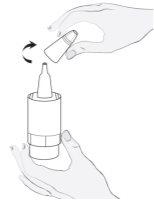
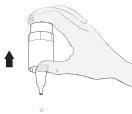 2
2